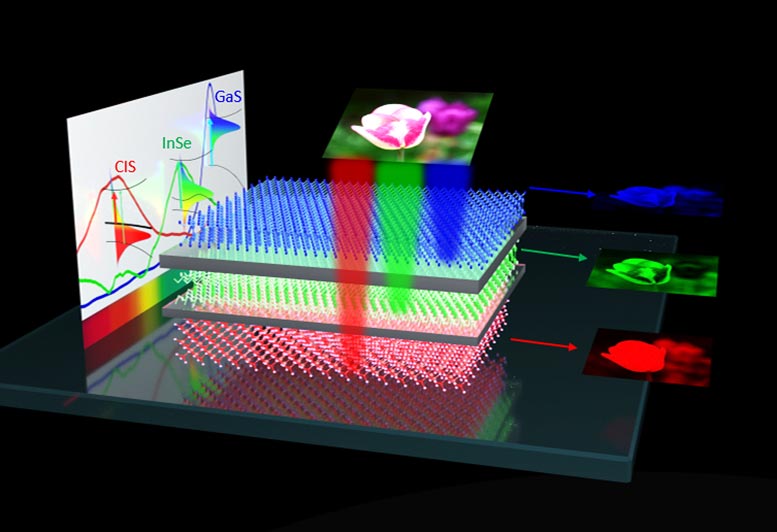Ningxin Li et al. from Georgia State University have published a new article titled "Van der Waals Semiconductor Empowered Vertical Color Sensor" in ACS Nano.
Abstract
Biomimetic artificial vision is receiving significant attention nowadays, particularly for the development of neuromorphic electronic devices, artificial intelligence, and microrobotics. Nevertheless, color recognition, the most critical vision function, is missed in the current research due to the difficulty of downscaling of the prevailing color sensing devices. Conventional color sensors typically adopt a lateral color sensing channel layout and consume a large amount of physical space, whereas compact designs suffer from an unsatisfactory color detection accuracy. In this work, we report a van der Waals semiconductor-empowered vertical color sensing structure with the emphasis on compact device profile and precise color recognition capability. More attractive, we endow color sensor hardware with the function of chromatic aberration correction, which can simplify the design of an optical lens system and, in turn, further downscales the artificial vision systems. Also, the dimension of a multiple pixel prototype device in our study confirms the scalability and practical potentials of our developed device architecture toward the above applications.
“This work is the first step toward our final destination–to develop a micro-scale camera for microrobots,” says assistant professor of Physics Sidong Lei, who led the research. “We illustrate the fundamental principle and feasibility to construct this new type of image sensor with emphasis on miniaturization.”

This rambling paper is an utter disinformation about a solution looking for a problem. The only useful part is Figure 2 where the van der Waals semiconductor device is explained which is pretty much the end of what the reader needs to learn. There is also some un-necessary rambling into color science which won't make it into an imaging publication but got accepted into a chemistry journal.
ReplyDelete